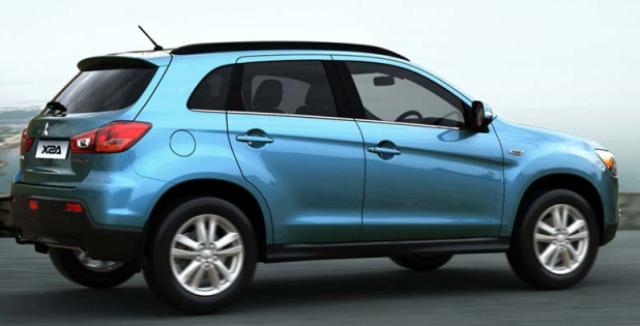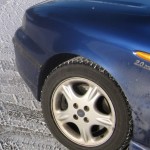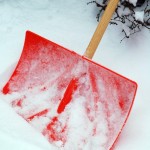As the temperatures drop we know the winter driving season is nearly upon us. Drivers need to start preparing now for driving on snow and ice. Driving on snow and ice is always challenging, but with a bit of preparation everyone can hopefully enjoy a safe winter season.
KNOW YOUR VEHICLE
The first part of being prepared for winter weather driving is to understand your vehicle and its features. You should be familiar with your vehicle as each operates differently. All newer vehicles have some common safety features, such as seatbelts, heaters and defrosters. The following features and items are usually options, most of which must be on the vehicle when it is made:
Antilock Brake Systems (ABS): Antilock braking systems are good for all seasons. They keep your vehicle under control during braking by preventing the wheels from locking and skidding. ABS can shorten stopping distances but their main purpose is to permit steering even when you are in a panic stop.
AWD and 4WD: Both options provide power to all four wheels. The primary difference between these systems is that 4WD provides low-range gearing, which can help in extreme conditions. AWD and 4WD provide maximum traction when traveling straight ahead; they provide no added benefit when braking or cornering.
Electronic Stability Systems: Electronic stability systems are known by many names although most include the word “stability.” These systems compare a vehicle’s direction and where the driver is steering and apply individual ABS brakes to help steer the car back on its intended course.
Ground Clearance: The higher a vehicle’s chassis, the better chance the vehicle has of being able to drive over a snow drift or pile. Many sports car owners learn too late that all-wheel drive can only do so much in a car that hugs the ground.
Headlight Washer/Wipers: The little wipers you may have seen on luxury car headlights might seem extravagant, but they serve to clear grime, road salt and snow accumulation that can dim your headlights. Most cars that offer headlight clearing use washer jets alone, which have proven effective.
Heated Seats: These are not necessarily a safety feature but are very comforting in subzero temperatures or for vehicles that have been sitting outside for a while.
Heated Side Mirrors: Heated side mirrors can clear themselves of fog, melt accumulated ice or prevent further snow buildup.
Heated Steering Wheel: This is a very useful feature as it allows a driver to place their hands directly on the steering wheel while the vehicle is still warming up without having to wear gloves, which could cause the wheel to slip during turns or other driving maneuvers.
Remote Start: This is primarily a comfort, not safety, feature. It permits a driver to stay indoors and start their car to warm it up and run the defrosters. Most remote starters only permit the vehicle to run for a period of time before it automatically shuts off the vehicle off.
Traction Control: Helps maximize grip by limiting how much the drive wheels can slip. Not as effective as AWD or 4WD for traction purposes.
Winter Tires: Winter tires are made to operate more efficiently in subfreezing temperatures. Treads have more biting edges for better snow traction and ice braking. If you are going to use snow tires, make sure you mount them on all four wheels. They do not perform as well as all-season tires on dry pavement and they wear out faster.
While cost is always a factor, if you live in an area with a lot of snow and ice you may want to consider making sure your next vehicle has some of these features or items.
PREPARING YOUR VEHICLE 
Before the first winter storm you should prepare your vehicle. This includes making sure your vehicle is in good working condition. A thorough review would include checking:
- Battery
- Brakes
- Electrical and Ignition systems
- Exhaust system
- Fluids: antifreeze and window washer fluid
- Heater/ Defroster
- Lights
- Tires: proper tread and tire pressure
- Windshield wipers blades
SAFETY KIT 
You should have some basic supplies and tools in your vehicle when driving on snow, especially on longer trip. Items you should have include:
- Bag of sand (especially if you have a lighter vehicle)
- Blanket
- Booster/ Jumper cables
- Bottle of water
- Cell phone
- Gloves
- Ice Scraper
- Road flares/ cones
- Shovel
- Snack/Protein Bars
- Snowbrush
- Winter clothing
OTHER POSTS INVOLVING DRIVING
Drivers: Beware of Deer
Alarming Statistics Regarding Distracted Driving
Drivers Understand But Often Ignore Risks of Texting or Talking on Cell Phone
Distracted Driving: Risks Inside Your New Car or Truck
ABOUT LAPIN LAW OFFICES
Lapin Law Offices urges Nebraska drivers to stay safe this time of year.
 If you have been injured in a motor vehicle accident due to the fault of another driver, whether on snow, ice or other any other cause, please contact Lapin Law Offices (402-421-8033 anytime) for a free consultation to learn about your rights and what we can do for you. We pride ourselves in representing clients with caring, passion and dedication.
If you have been injured in a motor vehicle accident due to the fault of another driver, whether on snow, ice or other any other cause, please contact Lapin Law Offices (402-421-8033 anytime) for a free consultation to learn about your rights and what we can do for you. We pride ourselves in representing clients with caring, passion and dedication.
